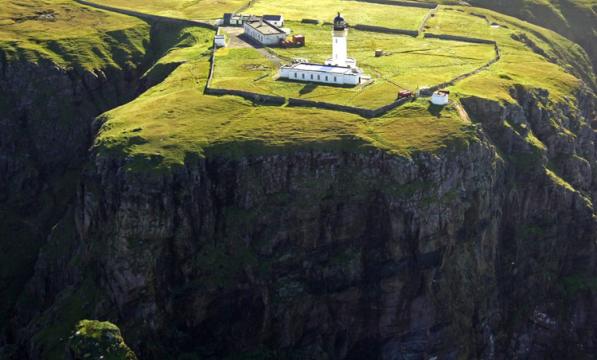Cape Wrath, Scottish Highlands by Michael Hutchinson

Cycling Weekly's 'Dr Hutch' — Michael Hutchinson — reveals what it's like to cycle on Britain's most remote road.
Cape Wrath is the most North Westerly point of the British mainland. It is breathtakingly remote. There is a lighthouse there, and (improbably) a small café, which claims to be open 365 days of the year – all the more impressive since the Cape is to all intents and purposes inaccessible for most of the winter.
You start out by getting a ferry across the Kyle of Durness. It’s a small ferry – it has an outboard motor bolted to the back, and it takes about 10 people.
There is an 11-mile road from the ferry slipway to the Cape. It is not a good road. It was created in the 19th Century to build the lighthouse, and it has not received a lot of attention since. It’s narrow and horribly potholed, it winds and undulates, and sometimes it deteriorates altogether into a patch of gravel. It passes through a live-fire training area for the army, so it gets bombed every so often. You can navigate it on a road bike if you’re careful, and don’t mind getting a lot of punctures, but it’s more a job for a proper tourer, a cross bike or a mountain bike.
It is an astonishing ride. It is wild and desolate. You are so obviously miles from anywhere that it’s a little unsettling – when the road rose over a crest I felt like I’d never seen so much sky in my life. When it dipped, the surrounding mountains suddenly felt claustrophobic.
On my ride the weather went from sun to rain and back half a dozen times. The first sight of the lighthouse was through a face-stinging rain squall – two minutes later, when I arrived outside the cafe, the sun was out again.
There is wildlife. Red deer, fulmar, puffins, cormorants, gannets, if you’re lucky even golden eagles. The land is boggy, punctuated by small lochs. There is a bothy three miles or so from the lighthouse if you want to spend the night – and you probably do.
In the late 1940s, Cycling’s touring correspondent, Rex Coley (known to readers as 'Ragged Staff') established the Cape Wrath Fellowship, for riders who had made it to the Cape with their bikes. He was trying to encourage the sort of adventure that touring riders had sought out before the war. The Fellowship still exists, administered by Cycling UK — the required evidence is a picture of you and your bike by the lighthouse.
